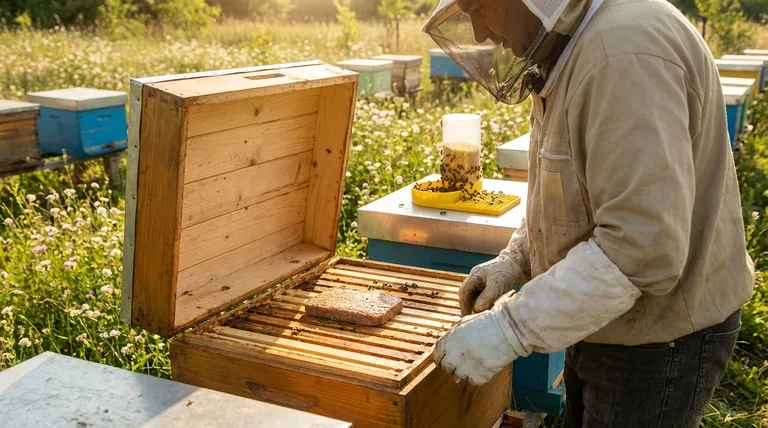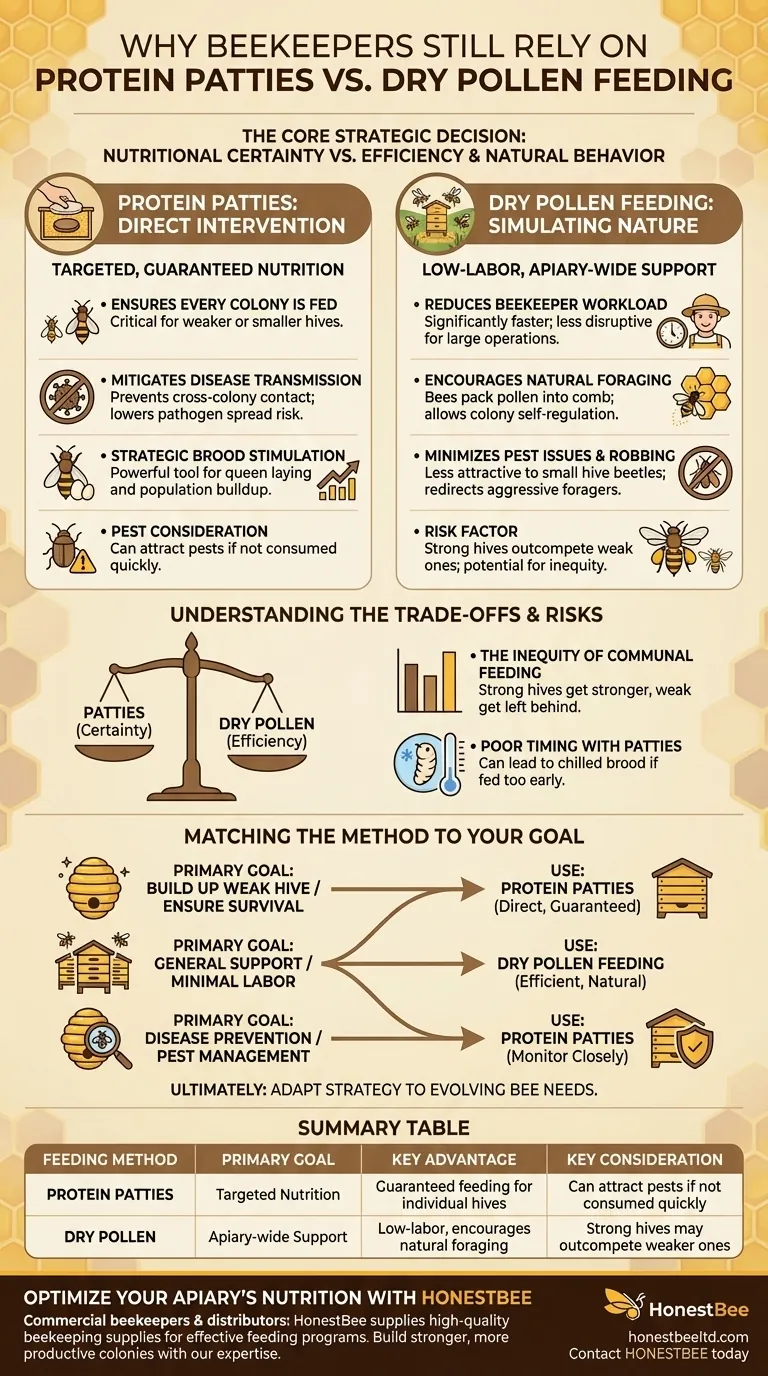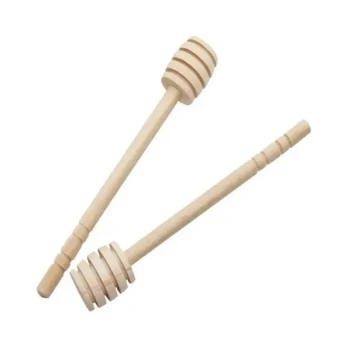The primary reason beekeepers continue to rely on protein patties is for nutritional certainty. While dry pollen feeding offers several advantages, patties are a form of direct intervention that guarantees each specific colony receives the protein supplement it needs, which is a level of control that open, communal feeding cannot provide.
The choice between protein patties and dry pollen is not a matter of which is universally "better," but a strategic decision based on control versus efficiency. Patties offer targeted, guaranteed nutrition for individual hives, while dry feeding provides a low-labor, apiary-wide supplement that simulates natural foraging.

The Case for Protein Patties: Direct Intervention
Protein patties are placed directly inside the hive, typically on top of the brood frames. This approach gives the beekeeper precise control over who gets fed and how much.
Ensuring Every Colony is Fed
With patties, there is no question of whether a colony receives nutrition. This is especially critical for weaker or smaller hives that might be outcompeted by more aggressive foragers from stronger colonies at a communal dry feeder.
Mitigating Disease Transmission
A communal dry pollen feeder can become a vector for disease, as bees from every colony in the area congregate in one spot. By using individual patties, beekeepers prevent this cross-colony contact and significantly lower the risk of spreading pathogens like nosema or foulbrood throughout the apiary.
Strategically Stimulating Brood Production
Patties are a powerful tool for stimulating the queen to lay eggs and build up the colony's population. This is often done in late winter or early spring to prepare the hive for the main nectar flow, ensuring a large workforce is ready to gather honey.
The Advantages of Dry Pollen: Simulating Nature
Dry pollen feeding involves placing pollen or a pollen substitute in a protected feeder somewhere in the bee yard. This method is less invasive and mimics how bees would naturally collect pollen from flowers.
Reducing Beekeeper Workload
Placing a large amount of dry pollen in a feeder is significantly faster and less disruptive than opening every hive to add a patty. For beekeepers with many colonies, this efficiency is a major benefit.
Encouraging Natural Foraging and Storage
When bees collect dry pollen, they pack it into their pollen baskets and store it in the cells of the comb, just as they would with natural pollen. This allows the colony to regulate its own consumption and create a food reserve for later use.
Minimizing Pest Issues and Robbing
Protein patties left in a hive for too long can attract pests, especially the small hive beetle. Dry pollen feeders are less attractive to these pests. Furthermore, offering a dry pollen source can redirect aggressive foragers and help reduce robbing behavior, particularly in the fall when natural resources are scarce.
Understanding the Trade-offs and Risks
Neither method is without its drawbacks. The beekeeper's choice must account for the potential downsides of each approach.
The Inequity of Communal Feeding
The primary risk of dry pollen feeding is that strong hives get stronger, and weak hives get left behind. Dominant colonies will send out more foragers and gather the majority of the feed, leaving little for the hives that need it most.
The Danger of Poor Timing with Patties
Feeding a protein patty too early in the season can be a critical mistake. It can stimulate a rapid expansion of the brood nest before the cluster of bees is large enough to keep all the new brood warm, potentially leading to chilled brood and a setback for the colony.
The Pest Attraction Factor
While patties can attract pests, they are typically consumed quickly by a healthy hive. However, if a hive is weak and cannot consume the patty in a timely manner, it can become a breeding ground for small hive beetles or wax moths, creating a significant problem inside the hive.
Matching the Method to Your Goal
Your feeding strategy should be a deliberate choice based on the current state of your hives and your objectives for the season.
- If your primary focus is building up a weak hive or ensuring a new colony survives: Use protein patties for direct, guaranteed nutrition.
- If your primary focus is providing general support to a large, healthy apiary with minimal labor: Use dry pollen feeding for efficiency and to encourage natural behavior.
- If your primary focus is preventing the spread of disease or managing pests: Use protein patties to avoid cross-colony contamination and monitor consumption closely.
Ultimately, the most effective apiary management often involves using both methods at different times for different reasons, adapting your strategy to the evolving needs of your bees.
Summary Table:
| Feeding Method | Primary Goal | Key Advantage | Key Consideration |
|---|---|---|---|
| Protein Patties | Targeted Nutrition | Guaranteed feeding for individual hives | Can attract pests if not consumed quickly |
| Dry Pollen | Apiary-wide Support | Low-labor, encourages natural foraging | Strong hives may outcompete weaker ones |
Optimize Your Apiary's Nutrition with HONESTBEE
As a commercial beekeeper or distributor, choosing the right feeding strategy is critical for the health and productivity of your hives. HONESTBEE supplies the high-quality beekeeping supplies and equipment you need to implement the most effective feeding program, whether you rely on protein patties for targeted intervention or dry pollen for efficient, large-scale support.
Let our expertise and wholesale-focused operations help you build stronger, more productive colonies. Contact HONESTBEE today to discuss your apiary's specific needs and discover the right solutions for your operation.
Visual Guide

Related Products
- HONESTBEE Professional Entrance Bee Feeder Hive Nutrition Solution
- High Performance Plastic Queen Excluder for Beekeeping and Apiary Management
- Metal Queen Bee Excluder for Beekeeping
- High Performance Cordless Electric Bee Shaker for Beekeeping
- Premium Wood Framed Metal Wire Queen Bee Excluder
People Also Ask
- What precautions should be taken when feeding bees inside the hive? Safeguard Your Colony from Robbing and Leaks
- How do you make an entrance feeder for bees? A Guide to Safe & Effective Hive Feeding
- What is the best feeder for bees? Choose the Right Feeder for Your Hive's Success
- How is the mesh ladder and barrier installed in the feeder box? A Step-by-Step Guide to Prevent Bee Drowning
- How to make an entrance feeder for bees? A DIY Guide for Safe & Effective Feeding



















